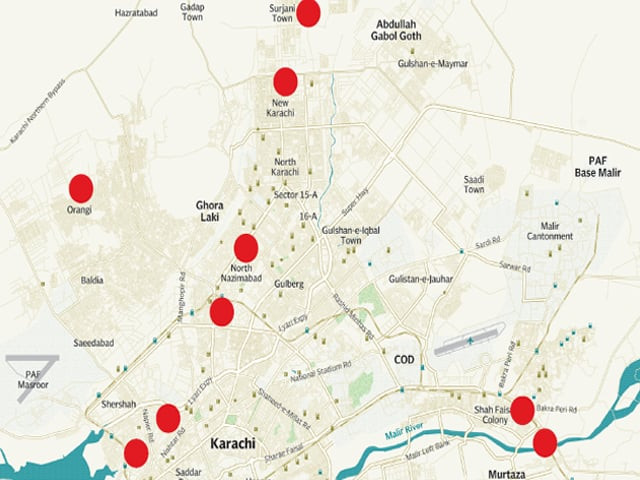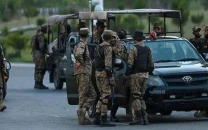Al Qaeda incorporated: Franchises and affiliates
Al Qaeda’s franchises and affiliates still flourish in the Arabian Peninsula, Iraq, North Africa and Pakistan.

Al Qaeda incorporated: Franchises and affiliates
Al Qaeda in the Arabian Peninsula (AQAP)
al Qaeda ’s Yemeni and Saudi wings merged in 2009 into a new group called al Qaeda in the Arabian Peninsula (AQAP), based in Yemen. They announced the merger three years after a counter-terrorism drive halted an al Qaeda campaign in Saudi Arabia. AQAP’s Yemeni leader, Nasser al-Wahayshi, was once a close associate of Osama bin Laden, whose father was born in Yemen.
Yemen’s foreign minister has said 300 AQAP militants might be in the country. The organisation has staged several attacks in Yemen in 2010, among them a suicide bombing in April aimed at the British ambassador, who was not injured.
The group also claimed responsibility for a foiled plot to send two air freight packages containing bombs to the United States in October 2010. The bombs were found on planes in Britain and Dubai. Last November AQAP vowed to “bleed” U.S. resources with small-scale attacks that are inexpensive but cost billions for the West to guard against.
Al Qaeda in the Islamic Maghreb (AQIM)
Led by Algerian militant Abdelmalek Droukdel, AQIM burst onto the public stage in January 2007, a product of the rebranding of fighters previously known as Algeria’s Salafist Group for Preaching and Combat (GSPC). The Salafists had waged war against Algeria’s security forces but in late 2006 they sought to adopt a broader ideology by allying themselves with al Qaeda.
AQIM scored initial high-profile successes with attacks on the government, security services and the United Nations office in Algiers in 2007. Analysts say there are a few hundred fighters who operate in the vast desert region of northeastern Mauritania, and northern Mali and Niger. AQIM’s most high-profile activity is the kidnapping of Westerners, many of whom have been ransomed for large sums. AQIM has claimed responsibility for the abduction of two Frenchmen found dead after a failed rescue attempt in Niger last January and it is also holding other French nationals kidnapped in Niger in September 2010.
Al Qaeda in Iraq (AQI)
The group was founded in October 2004 when Jordanian militant Abu Musab al-Zarqawi pledged his allegiance to Osama bin Laden and al Qaeda. In October 2006, the al Qaeda-led Mujahideen Shura Council said it had set up the Islamic State of Iraq (ISI), an umbrella group of Sunni militant affiliates and tribal leaders led by Abu Omar al-Baghdadi. In April 2007 it named a 10-man “cabinet,” including Masri as its war minister. Fewer foreign volunteers have made it into Iraq to fight with al Qaeda against the US-backed government but the group has switched to fewer albeit more deadly attacks. The Iraqi government, the Shia community and the ‘awakening councils’ are now their main targets
Pakistan
al Qaeda forces that fled Afghanistan with their Taliban supporters remain active in Pakistan and have mutually supportive links with indigenous Pakistani terrorist groups. al Qaeda is widely believed to maintain camps in western Pakistan where foreign and local extremists receive training in terrorist operations. By one account up to 150 Westerners went to western Pakistan to receive terrorist training in 2009. al Qaeda has also forged operational links with several other local groups such as Jundullah and the Lashkar-e-Jhangvi, all of which pose a clkear and present danger to the Pakistani people and state.
Al Shabaab
Al Shabaab (the youth), emerged when Islamic Courts Union (ICU) fighters joined the resistance against the Ethiopian forces in Somalia. The organisation was led by a small group of Somalis with alleged ties to foreign terrorist groups. Al Shabaab and al Qaeda , however, have not been able to win the hearts and minds of the majority of Somalis.US targeted attacks against the leadership of al Qaeda and Al Shabaab have weakened the two organisations over the past two years. Two of the three wanted al Qaeda terrorists in Somalia, Abu Taha al Sudani and Saleh Ali Saleh Nabhan were reportedly killed in 2007 and 2009, respectively. In March 2008, the State Department designated Al Shabaab as a Foreign Terrorist Organization and as a Specially Designated Global Terrorist entity.
In September 2009, Al Shabaab released a video, entitled “At your service Osama,” declaring its allegiance to Bin Laden.
Jemaah Islamiyah (JI)
The Indonesian based Jemaah Islamiyah (JI) emerged in 1993 while its leaders Abu Bakar Bashir and Abdullah Sungkar were in hiding in Malaysia from the persecution of the Suharto government. Jemaah Islamiyah was responsible for the Bali bombings in October 12, 2002 in which suicide bombers killed 202 people in two blasts. After this attack, the US State Department designated Jemaah Islamiyah as a Foreign Terrorist Organisation. It is also strongly suspected of carrying out the 2003 JW Marriott hotel bombing in Kuningan, Jakarta, the 2004 Australian embassy bombing in Jakarta, the 2005 Bali terrorist bombing and the 2009 JW Marriott and Ritz-Carlton hotel bombings.
In the 1990s, al Qaeda helped strengthen and make more violent the JI network. By the end of the 1990s, JI and al Qaeda appear to have developed a highly symbiotic relationship, sharing training camps in Pakistan, Afghanistan, and Mindanao, with al Qaeda providing JI with financial support. The two networks jointly planned operations and reportedly conducted attacks in Southeast Asia together.
Many analysts believe JI now primarily operates only in Indonesia, with a number of operatives also active on the large southern Philippine island of Mindanao and on the Sulu islands extending from Mindanao. In September 2009, Indonesian authorities killed the leader of one such cell, Noordin Top, whose faction changed its name to the al Qaeda Jihad Organisation for the Malay Archipelago. Other JI leaders like Nasir Abbas, Noordin Top’s former superior, have renounced violence and even assisted the Indonesian and Malaysian governments in the war on terrorism. Recently a known JI terrorist Umar Patek was arrested in Pakistan.
Published in The Express Tribune, Sunday Magazine, May 8th, 2011.



















COMMENTS
Comments are moderated and generally will be posted if they are on-topic and not abusive.
For more information, please see our Comments FAQ